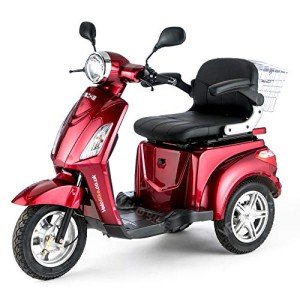- 작성자 Klaudia
- 댓글 0건
- 조회 521회
- 작성일 2025.06.28
본문
Velcro: A Revolutionary Fastening Solution
Introduction
Velcro, a name that has almost ended up being associated with hook-and-loop fasteners, has revolutionized the way we consider securing products. Typically a staple in various industries and households, Velcro uses a basic yet effective solution to secure items without the requirement for buckles, buttons, or zippers. This post looks into the origins, mechanisms, applications, and advantages of Velcro as well as addressing some often asked questions.
The Origins of Velcro
Velcro was developed in the late 1940s by Swiss engineer George de Mestral. After a searching journey in the Alps, Mestral ended up being interested by the burrs that stuck to his pet dog's fur. Upon closer assessment, he understood they worked through a system of tiny hooks that ensnared anything with a loop, including fabric and fur. Recognizing the potential of this natural attachment system, Mestral embarked on a journey to recreate it in a synthetic kind. By 1955, he had actually patented his development, branding it "Velcro," a mix of the French words "velours" (velour) and "crochet" (hook).
How Velcro Works
Velcro consists of 2 different pieces: a hook side and a loop side. These 2 components interlock when pressed together, developing a strong bond that can be easily released with an easy pull. The performance of Velcro can be broken down into these main elements:
| Component | Description |
|---|---|
| Hook Side | This side includes tiny hooks that catch and keep loops. |
| Loop Side | This side consists of soft loops created to yield to hooks when gotten in touch with. |
Mechanism of Fastening
- Interlocking: The hooks on one side capture the loops on the other, creating a physical interlock.
- Strength: The variety of hooks and loops guarantees a considerable holding strength, making it appropriate for both light and durable applications.
- Ease of Use: Velcro can be disengaged and re-engaged various times without losing its effectiveness, setting it apart from more conventional fastening approaches.
Applications of Velcro
Velcro has discovered application throughout a myriad of sectors, including:
Fashion Industry
- Sportswear
- Shoes (specifically children's shoes)
- Accessories (belts, bags)
Medical Field
- Orthopedic gadgets
- Bandages
- Prosthetics
Automotive and Aerospace
- Seat covers
- Interior linings
- Security gear
Family Items
- Drapes
- Carpets
- Organizers
Industrial Use
- Cabling
- Equipment fastening
- Tools storage
Benefits of Velcro
The popularity of Velcro can be credited to several benefits it provides over conventional fastening approaches:
- Quick and Easy to Use: No tools are needed, making it user-friendly.
- Flexible: Works on numerous surface areas and materials.
- Adjustable: Allows for simple adjustment in size (e.g., straps).
- Resilient: Holds up under repetitive use.
- Washable: Maintains its function even after washing.
Prospective Drawbacks
While Velcro is helpful in lots of contexts, there are some limitations to be knowledgeable about:
- Noise: The sound of Velcro being pulled apart can be loud in quiet settings.
- Wear and Tear: Over time, excessive usage may lead to fraying or lowered efficiency.
- Limitations with Heavy Loads: While it can hold significant weight, it may not be ideal for incredibly heavy items.
Frequently asked questions about Velcro
1. Is Velcro waterproof?
Yes, velco Velcro can be made from waterproof products, making it suitable for outdoor and marine applications.
2. Can Velcro be recycled?
Absolutely! Velcro is created for repeated use, and many products can be resealed and opened several times.
3. How do you tidy Velcro?
Cleaning up Velcro is simple. You can utilize a lint roller or a soft brush to get rid of debris. For stubborn dirt, it might be rinsed gently with water.
4. Is Velcro strong enough to change zippers?
In lots of applications, yes, Velcro can effectively change zippers, particularly in circumstances where quick fastening and unfastening are needed.
5. Are there different types of Velcro?
Yes, there are lots of types, consisting of differing widths, colors, adhesive strengths, and products created for various applications (i.e., high-temperature, outside, and so on).

Velcro has proven to be a versatile and ingenious securing service that has actually infiltrated numerous sectors, improving both everyday life and industrial applications. Its ability to supply a dependable and user friendly method of fastening makes it an enduring component of modern style. From casual garments to sophisticated medical applications, Velcro continues to support its reputation as a staple fastening technique for numerous usages. Whether it's for the fashion lover or a professional in the medical field, Velcro stays an unrecognized hero worldwide of securing technology.
By transforming how we link and secure items, Velcro is a testament to the power of ingenious thinking and simplicity in style. As technology progresses, we can only prepare for a lot more innovative applications for this remarkable development in the future.

댓글목록 0개
등록된 댓글이 없습니다.

